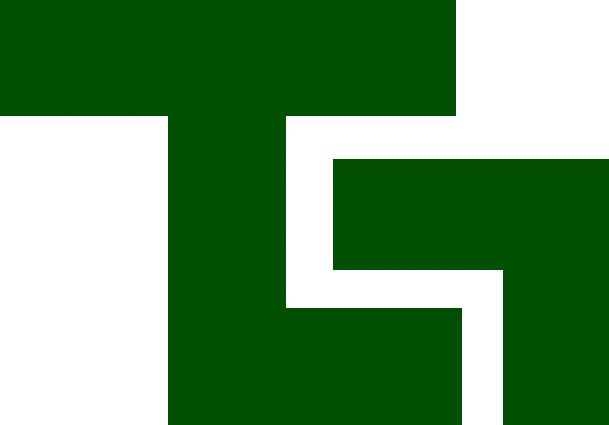Historisches Wörterbuch der Biologie, Rezension
Biological Theory 7 (2013), S. 278-280
ABC of Biological Concepts
Jan Surman
Recent years have witnessed a growing interest into questions concerning the language of natural science in its historical perspective. Similarly, histories of biological concepts have been one of the main points of interest for cultural scientists (e.g., Müller 2011; Wirth 2011) and philosophers (e.g., Brigandt 2010; Huneman and Wolfe 2010; Reynolds 2010) concerned with the conceptual history of the natural sciences. Taking the form of a historical dictionary, this three-volume work of biologist and philosopher Georg Toepfer sets new standards in the endeavor to understand present biology through its past. It is not, however, a classic dictionary and should rather be compared to dictionaries of Grundbegriffe, giving extensive analysis of fundamental concepts. Such dictionaries have hitherto been published for topics including, among others, political discourse or philosophy (e.g., Brunner et al. 1972-1997; Kolmer and Wildfeuer 2011). Although written in German, the possible scope of interest in Toepfer's volume should not be limited to a single language community. In the first place Toepfer in his introduction provides the most up-to-date and elaborated argumentation about why history of biological concepts matters. Second, concepts tend to nomadically travel between languages as they do between disciplines (Stengers 1987), and the chosen concepts mirror the current, "globally" used terminology.
In his introduction, Toepfer presents the work as "a history of ideas internal to science, in which concepts will be presented in their historical configurations and transformations" (vol. I, p. xxxiii). While it is still a dictionary, such an approach certainly widens the possible set of readers, although it is hard to imagine someone will read 2,500 pages cover to cover. But certainly, each single article acts as a micro-study of the conceptual history of biology, some of fifty pages and more. In these entries Toepfer follows Canguilhem's idea to present concepts as actors in the history of science (cf. Schmidgen 2008), concentrating less on the personal/biographical, institutional, and epistemic-technical contexts. Interesting here is Toepfer's argumentation for leaving out the epistemic-technical side of the concepts. While he acknowledges that general concepts are not stable theoretical entities but rather similar to "epistemic things" (Rheinberger 1997), and come to be leading biological concepts through their connection to empirical facts, the Grundbegriffe are aloof of empirical reification and defined by their stability (vol. I, p. xxxv). While one instinctively asks about concepts that failed, such as phlogiston in chemistry, or about experimental work on concepts (e.g., Steinle 2009), this would certainly exceed the scope of a dictionary.
As far as the dictionary side is concerned, Toepfer analyzes in 2,500 pages, with 112 main and 1,760 side entries concerned with general biology, leaving aside currently flourishing sub-disciplines like evolutionary biology or genetics that have developed their own rich terminologies. Such an approach allows him to thoroughly analyze selected general concepts, which can be found throughout the disciplinary spectrum of the human sciences. Entries range from a few pages (Feld/field, Genetik/genetics) to more than 70 (Organismus/organism, Selektion/selection). In all cases they are autonomous studies of their own on the origin and changes of the concepts up to the present, some remaining open ended in the modern context.
In many places alternative concepts and the prehistory of concepts are also introduced. For example, the entry on Generationswechsel (alternation of generations) begins not with the word itself, introduced by J. Steenstrup (1842); but goes back to Bonnet's Traité d'insectologie (1779 [1745]) and Chamisso's writings from the first half of the 19th century, scientists who described the alternation of generations in aphids and thaliacea, respectively (von Chamisso 1819; vol. II, p. 49) [second reference is to Toepfer]. Subentries for Generationswechsel cover gametophyte, heterogony, heterogenesis, homogenesis, metagenesis, and sporophyte, providing a genealogical oversight over the conceptual differentiation of more than two hundred years. The entries are supplemented with images and tables explaining and visualizing the historical uses of the concepts in question, extensively quoted definitions, and Toepfer's own definition of how given concepts are currently understood. Literary appendixes for the entries cover only books/articles analyzing the concepts; most of the literature quoted in the endnotes (with some sections containing 400 notes or more) can be found online at the homepage of the publisher (with limited access) and in Toepfer's vast bibliography on philosophy and history of biology (http://www.georg-toepfer.de/files/Bibliografie.pdf), a much more reasonable choice than printing an over-300-pages-long entry. But as Toepfer makes only scarce use of abbreviated records, the notes remain readable. Orientation in the volume is facilitated by a word index included in the first volume (vol. I., pp. l-lxxiv). Apart from the entries, an online accessible database, "Bioconcepts. The Origin and Definition of Biological Concepts. A Multilingual Database" (www.biological-concepts.com), provides historical quotations with definitions of concepts included in the dictionary. Although not a part of the books itself, it is a useful tool for both research and teaching, especially as Toepfer sees it as a work in progress to be continuously updated. While a person index would have required a vast amount of work, it would at the same time facilitate the use of the dictionary as a work of reference. That one is not included cannot be seen as a major fault, though.
Toepfer's tracing of the history of concepts uncovers some less known or even unknown facts. Thus, the word "biogeography" was used first by H. Jordan (1883), several years before being popularized by F. Ratzel (vol. I, p. 231). It was also not A. G. Tansley who coined the word "ecosystem," but his younger colleague A. R. Clapman (vol. II, p. 715). Taking neither a revisionist stance nor being concerned with priority disputes, Toepfer draws attention to a number of such interesting facts that are often known only to a few historians. Although the dictionary is aimed at students, entries will meet the expectations of professional historians and philosophers of biology, especially if a concise outline is needed.
The entries, however, are not the only merit of the volume; data assembled by Toepfer allow us to make some more general statements about biology and its conceptual framework. Interestingly, of 112 central biological concepts, ancient Greek ones cover around one third, one third were coined in the 19th century, and only a few in the 20th (vol. I, p. xxii). While these statistics might change if side entries were taken into account, the dictionary gives a picture differing from that of a paradigmatic break linked to conceptual revolutions, showing instead a history of accommodation of new meanings into existing concepts. Although there are no comparable sources for the terminology of other disciplines, assembling and analyzing the statistical data gathered by Toepfer would be a worthwhile achievement (for an example of such an approach, see Dibattista 2003).
Second, a concept analysis allows us to look at the development of biology not only as an interplay of theory-laden concepts, but also as a "reception and construction of the past" (vol. I, p. xix), through the imbuing of old terms with new meanings. This approach questions the approaches to history of biology that present it as a linear accumulation of knowledge, countering it with manifold examples. The dictionary is about "dynamics, but also repeated attempts to establish statics" (vol. I, p. xxix)-a dialectical process which, exemplified here with biological concepts, characterizes all sciences but is seen mostly from the point of view of the final result, i.e., the statics. This dialectic is, however, as left out in conventional historiography as the fact that many concepts have co-existently differing definitions, not infrequently marked by distant theoretical perspectives. While Toepfer did not want to write a textbook on the history of biology, his ideas offer a refreshing perspective on how to conceptualize such a work.
To sum up, Toepfer's historical dictionary impresses by its exactitude and elaborateness, by the abundance of the terms described, and the precision of their depiction. Yet it is not only because it is the sole historical dictionary of biology, second altogether in the field of natural sciences, that it deserves a place in biological libraries and curricula of education in biology. Indeed, while it may be true that this historical dictionary is a work "about an aspect of the sciences that does not usually interest an active scientist" (vol. I, p. xvii), Toepfer's work could or even should move practitioners to reflect on the concepts they use. Although certainly it has a cultural scientific approach, the text does not fall into the trap of the overcomplicated language of Kulturwissenschaften, and is accessible without studying this discipline.



